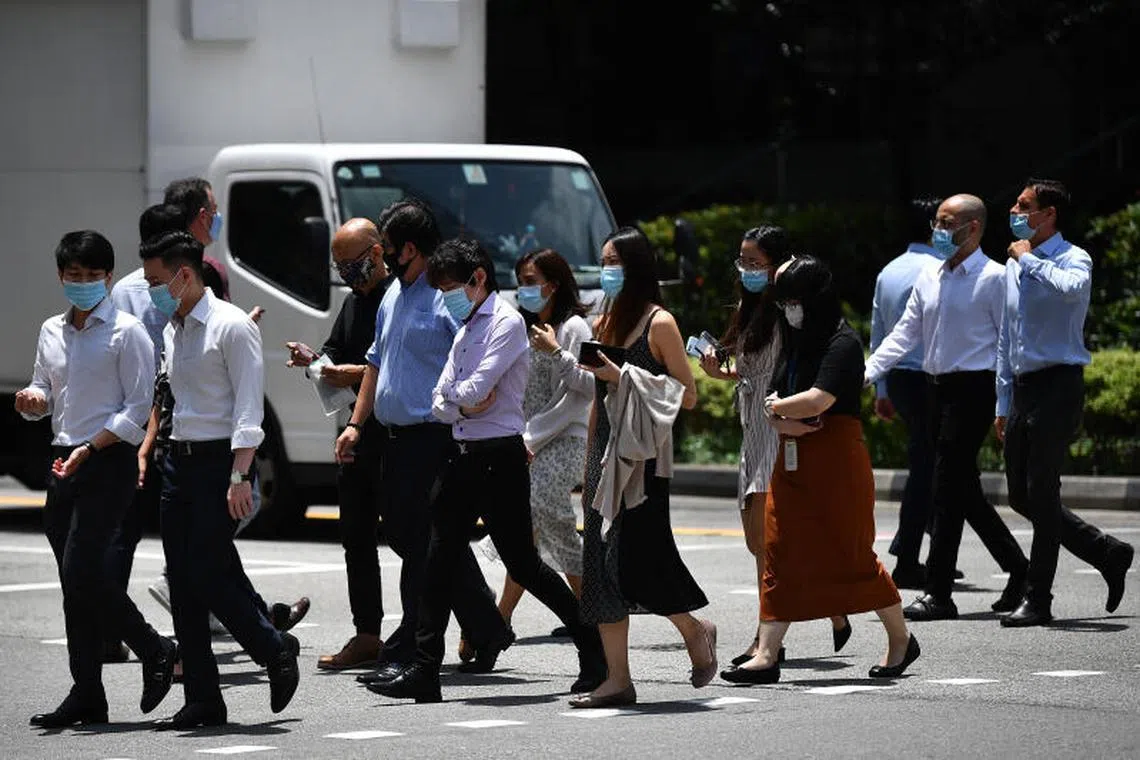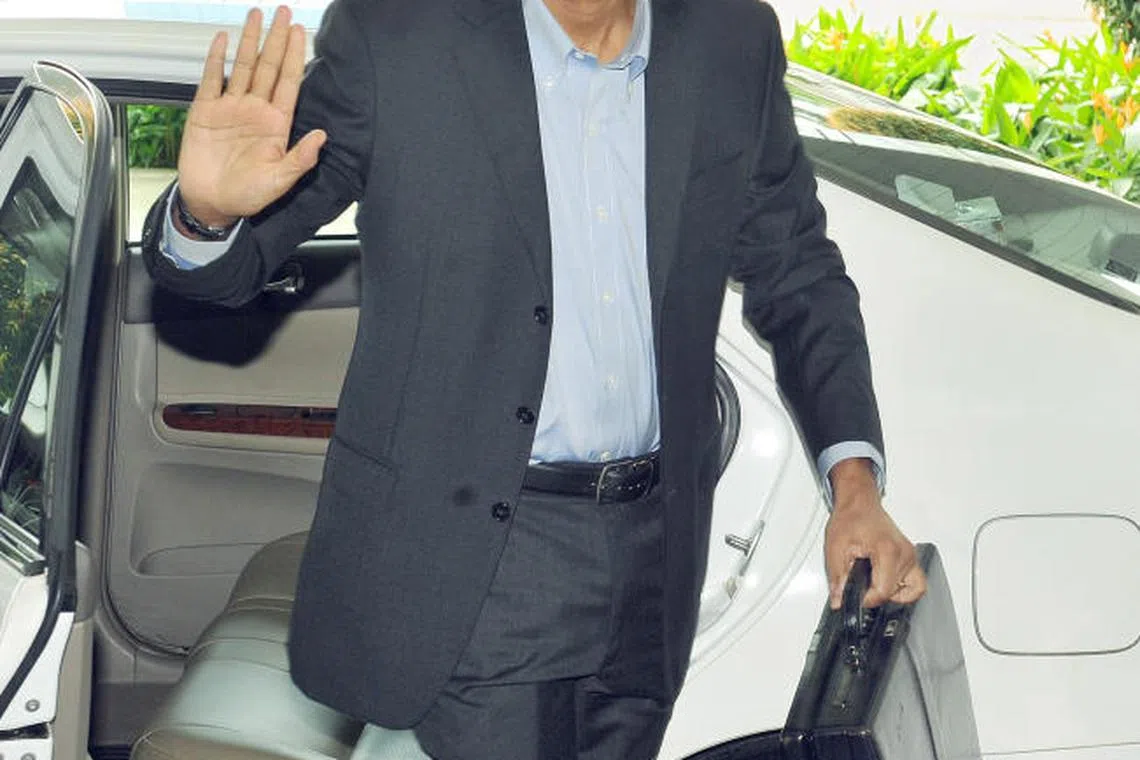BT Explains: Singapore's love-hate relationship with foreign workers

YOU might remember the topic of foreign manpower - in particular, immigration - taking the forefront of public consciousness in the months leading up to the 2011 General Election.
Singaporeans felt they were being crowded out on public transport, squeezed out of jobs and hit by surging resale HDB prices, and quickly came to the conclusion that these struggles had one common denominator: the rapidly-changing face of Singapore's populace.
Voters then took their anxiety and unhappiness to the polls, contributing to the ruling People's Action Party's first-ever loss of a Group Representation Constituency (Aljunied) to the Workers' Party.
Since then, the issue of foreigners and immigration policy in the Republic has resurfaced often - nary a Budget statement has gone by without mention of the foreign worker levy or dependency ratio ceiling and how or whether it will be adjusted.
Sentiment towards foreign manpower in Singapore has over the past decade segmented itself, too, with a distinction made between lower-wage workers in sectors like construction, manufacturing, security and cleaning, and skilled professionals, managers and executives (PMEs) at higher-level S Pass and Employment Pass salaries.
The former, Singaporeans generally seem to accept, are needed to do the jobs they eschew, while the latter are the ones viewed to be in direct competition against Singaporeans for better-paying jobs.
In the past year-and-a-half, concerns over Singapore's hefty foreign workforce came to a head as the Covid-19 pandemic swept away jobs and businesses, and the virus spread like wildfire through the foreign worker dormitories, where over 300,000 live.
Most recently, new clusters of infections and reinfections surfaced after months of zero or single new cases reported. As of mid-August, some 106 cases were found, many of whom were among fully-vaccinated workers, across four dormitories.
In his latest National Day Rally speech, Prime Minister Lee Hsien Loong announced that minimum salaries for E and S Pass holders will be upped further, while firms that employ foreigners will have to pay their local employees a minimum qualifying monthly wage of S$1,400 - a move that will have major implications for low-income Singaporeans and foreign workers, and the businesses and industries that employ them.
So how did Singapore get here? BT summarises below the history of Singapore's transient labour and immigration policies, and where we might be headed.
How did Singapore become so dependent on foreign labour?

It all started in the 1980s and 90s, when Singapore's leadership implemented policies to foster economic growth and help its growing businesses cope with labour shortages. These translated to the Republic's foreign worker population increasing rapidly.
The decade ending 2010 saw Singapore's non-resident workforce jump 81.8 per cent to 1,113,200, from 612,200 in 2000, after trebling over the decade prior - in 1990, the figure stood at 248,200.
The figure appears to have stabilised at around 1.3 million in recent years, totalling 1.4 million at end 2019 and 1.2 million at end 2020.
The need to augment the local workforce
In a 2014 book on international migration in East Asia, Institute of Policy Studies researcher Yap Mui Teng noted that in the mid-1980s, there was global recognition that foreigners (both professional and the less-qualified) were needed to augment a domestic workforce. A government-appointed economic committee in 1985 opined that foreign unskilled workers should be allowed in on a "revolving" basis while efforts should be made to retain skilled workers. Thereafter, various ministers pushed the view that manpower constraints would "hobble economic growth and cause businesses to relocate elsewhere, thereby dampening job opportunities and lowering the standard of living for Singaporeans".
In 2005, a policy decision attributed to former deputy prime minister Wong Kan Seng, then in charge of the Prime Minister's Office's National Population and Talent Division, saw the mass granting of new citizenships and permanent residencies, and an even sharper increase in foreign work permit holders to augment population and productivity growth. From 2007 to 2009, the number of new PRs granted yearly reached new highs:
- 2007: 63,627
- 2008: 79,167
- 2009: 59,460
Despite rumblings about competition for jobs and a rising cost of living, it was only in August 2009 that PM Lee said he would slow the pace of intake of foreign workers.
The following year, new PR approvals dived to 29,265, with slight rises in recent years to 32,915 in 2019.
The reasons cited for growing the foreign workforce here were always economic - to sustain and seize growth opportunities, create jobs and income growth for Singaporeans - whereas the argument for lower-level labour was Singaporeans' disdain for jobs that, though essential to the economy, offer poor salaries and job progression.

In 2010, then-finance minister Tharman Shanmugaratnam, in a round-up Budget speech, defended the government's aggressive intake of foreigners on all fronts.
"It illustrated the real pressures that the business sector faced at the time. If we had turned away investments and prevented competitive businesses that were already in Singapore from growing, we would have ended up with a decade of very weak income growth," he said.
But in what was seen by many as an inflection point in the government's stance on foreign labour, Mr Tharman said increasing Singapore's dependence on foreign workers is not a sustainable strategy in the long term.
Continuing to do so, he said, will demotivate employers from upgrading their operations and increasing productivity - something else Singapore has been struggling with for decades now.
He also acknowledged the widening sentiment among irate citizens: "We will also run up against the social and physical limits that an ever-increasing proportion of foreigners in our workforce would bring."
Then came the 2013 Population White Paper tabled by the government and passed in Parliament after very heated debate, which projected that by 2030, Singapore's population could hit an upper band of 4.4 million citizens and a foreign workforce of some 2.5 million.

In support of it, former national development minister Mah Bow Tan said in Parliament that Singapore should "go for the maximum that our resources - land, water, energy - can support, whatever that number is".
So in short, we got here thanks to:
How did the topic return to public discourse?
Last year, when the Covid-19 virus swept through Singapore's foreign worker dormitories, questions were thrown up about the crowding and living conditions there in the context of safe distancing measures. Also brought into focus were the welfare of the workers and their sheer numbers.
Political analysts and commentators called on Singapore to try to wean itself off foreign workers; industry associations protested; and ministers responded through interviews, public speeches and in Parliament.
Discussions resumed once again in August when new clusters surfaced at some dormitories. This time, a new concern was the movement restriction that dorm-dwelling foreign workers were subjected to. For the better part of two years now, residents were not allowed to leave the dorm except to their worksites.
In his 2021 National Day Rally speech, PM Lee took the foreign worker discussion further when he announced that the government will raise salary thresholds for E and S Passes, continuing a recent trend.
To protect the salaries of lower-wage local workers, Mr Lee also announced that companies with foreigners in their employ must pay their locals a minimum of S$1,400 per month.
Should Singapore cut its foreign workforce?
It depends on who you ask.
Yes, if you ask analysts and political commentators. The way they see it, Singapore should be innovating and cutting labour-intensive processes.
No would be the answer from employers and small to medium-sized enterprises (SMEs). No matter how attractive the pay package, locals are not keen to work for SMEs, they declare.
Employers also argue that in many instances, it is not possible to substitute foreign labour with technology and automation.
Well, what's the government's stance?
The government has previously said it is keen to reduce the country's reliance on foreigners, but also knows the implications of doing so: slower construction and manufacturing timelines and higher costs across the board.
Significantly, recent remarks from three of the fourth-generation leaders appear to be advocating a change in thinking, instead of signalling a shift in policy.
They're saying Singapore needs to remain open to global talent, but the challenges local PMEs face from competition from foreigners are real, and the government will take steps to help them out.

In Parliament in early July, ministers Ong Ye Kung and Tan See Leng took turns defending Singapore's free trade agreements and foreign labour policies - in particular the India-Singapore Comprehensive Economic Cooperation Agreement, better known as CECA.
They were responding to non-constituency MPs Leong Mun Wai and Hazel Poa from the opposition Progress Singapore Party, who were targeting the CECA in filed parliamentary questions.
Notably, neither of the ministers declared a clear stance on whether Singapore should let in more foreign labour or reduce our reliance on it. They did however, highlight that:
- there are thousands of PME vacancies in various sectors that locals have not been able to fill, and
- that regardless of any trade agreements that might exist between two countries, all foreign PMEs and any of their dependents who come here are subject to our work pass criteria.
They also acknowledged that:
- The growth of employment pass holders has come at the expense of local PMEs;
- Some workplaces have become more concentrated with employees from a single country - the example of India at Changi Business Park was mentioned; and
- Some companies are exhibiting unfair hiring practices, showing preference for foreign PME candidates, or even those from specific countries.
Looking ahead, Education Minister Chan Chun Sing offers some insight.

In his August 16 speech on Singapore's future challenges, the minister pointed to low wages in certain domestic-oriented sectors as a reason for part of Singapore's dependence on foreign workers:
“"For example, do we rebalance the foreign workforce dependency for the domestically oriented sector to create demand for local workers at higher wages? Bearing in mind that as we support higher wages in these areas, there will be cost pressures on employers, and consumers will see higher prices. Ultimately, it will also depend on Singaporeans' perceptions of the value and status of these jobs, and whether we are willing to accept these jobs. These will take time, but we must keep working at it."”
But he too hinted at the necessity of shifting one's mindset past "the debate on foreign-local worker balance", arguing that any country, Singapore included, must focus on building a "global innovation and knowledge network".
Mr Chan spoke about adapting to the evolving nature of work, which includes remote work - this, he notes, opens companies to more opportunities for talent from anywhere in the world, meaning Singapore companies can also tap on foreign talent without actually having to bring them here.
"We need the best ideas and talent to compete on our side. We also need to pay close attention to the composition of our society. This will take careful calibration, but it can be done."
So where does this leave us?
Where indeed? One thing's for sure - lowering the number of foreign workers here is a gargantuan task that will likely take much longer than it took to grow it (decades, by the way), and will also be very painful and difficult for many companies.
Shutdowns could happen, prices may shoot up, delays will be the only definite. But perhaps this is a process we will all need to go through, no matter which side of the debate you're on, in order to pursue productivity, sustainability, and (dare I utter that word?) growth.
Decoding Asia newsletter: your guide to navigating Asia in a new global order. Sign up here to get Decoding Asia newsletter. Delivered to your inbox. Free.
Copyright SPH Media. All rights reserved.
